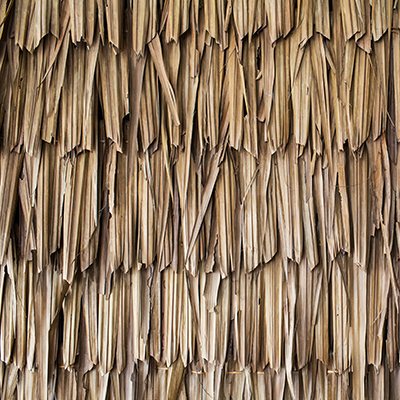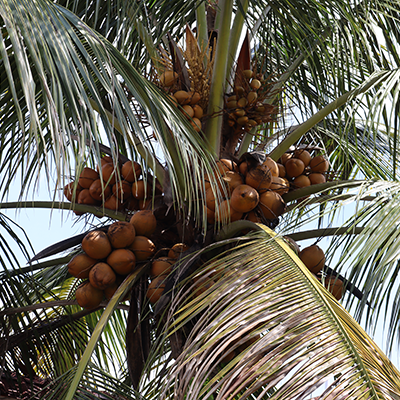Palm trees are a symbol of victory, triumph, peace, and success. For those living in northern parts of the U.S., they are a sign of warmer weather, going on vacation, and a tropical climate. Here in Central Brevard, Florida, we are surrounded by these majestic beauties. For many of us, they have always been there, a staple of our daily lives swaying their large fan-shaped leaves in the wind. But these beloved plants have a story to tell, begging us to listen as we find solace in their beauty. Read on and discover some of the most amazing facts we bet you didn’t know about Central Brevard’s palm.
Of the 2500 Species of Palms that Exist, 12 Are Native to Florida
There are over 2500 species of palm trees throughout the world. Palms come from the Arecaceae plant family and can be found in tropical rainforests and arid regions around the globe. One species can even be found in the cold state of Alaska! We have 12 palms native to our state here in Florida, including our state tree, the Sabal palm. They include:
- Everglades Palm
- Needle Palm
- Sabal Palm
- Thatch Palm
- Silver Palm
- Royal Palm
- Saw Palmetto
- Buccaneer Palm
- Dwarf Palmetto
- Miami Palm
- Scrub Palmetto
- Key Thatch
There Are Palm Species That Can Reach Massive Heights
There are species of palm trees that can reach heights of up to 70 feet, the same height as the White House. The Quindio wax palm is the tallest species growing up to 200 feet. Mexican fan palms grow up to 100 feet while the date palm sprints up to 80 feet at a fast pace.
Plant a Palm Today, It May out Live You
Scientific evidence has long predicted that palms are the oldest living tree. Research suggests that this is because their cells are not replaced with the new cells as in the case of other trees. A few species of palms can live for more than a century.
Tiki Huts Are Made From Florida’s Thatch Palm
Tiki huts that line beaches and resorts up and down Florida used for shade are made from thatch palm. It is a natural material that is dried and made into a high-quality roofing material. Palm thatched roofs have been used for centuries due to their durability and tolerance to withstand different weather elements.
The Leaves of a Palm Tree Are Called Fronds
Those fan-shaped leaves you see swaying in the wind are called fronds. In fact, all foilage belonging to a palm tree is called a frond. Most palms grow fronds from the crown of the plant. Other than a palm tree’s trunk, fronds are the key factor in identifying a palm tree.
Not All Palms Produce Fruit or Coconuts
Many of the palm trees in Brevard County produce delicious fruit such as coconuts, acai berries, and dates. But not all types of palm trees do. If ingested, the sago’s palm is extremely poisonous to both humans and animals. Before proper processing to remove toxins, intake of sago palm can cause vomiting, diarrhea, weakness, liver failure, and seizures. Other poisonous palms include the Formosa palm, the cardboard palm, fishtail palm, and queen sago palm.
There are No Tree Rings on a Palm Tree
As a kid, you probably remember counting a tree’s age by counting the rings on a stump. This is not possible with palm trees because they do not have tree rings. Instead, if you look at the center of a palm tree, you will find circular vessels throughout. These vascular tissues are called xylem and phloem. The purpose of these vascular tissues is to thicken up the tree’s trunk until it reaches its maximum diameter. Once the tree has reached its full size, it stops. This process helps a palm tree remain sturdy and able to support the enormous weight of the tree’s leaves and its fruit.
Palm Trees Have Played Different Roles Throughout History
Fossil records indicate that date palms were widespread throughout the Mediterranean as far back as 56,000 years ago. Evidence suggests that palm trees were used as a food source in Mesopotamia approximately 5,000 years ago. The Romans used the branches of palm trees as a symbol of victory, and the palm tree has long been a symbol of peace and prosperity in the Christian religion.
The Oil Palm Tree Is Responsible for the Controversial Palm Oil Everyone Is Discussing
Palm oil is an edible vegetable oil that comes from the fruit of oil palm trees. Two types of oil can be produced, crude palm oil and palm kernel oil. Crude palm oil comes from squeezing the fleshy fruit, while palm kernel oil comes from crushing the kernel or stone in the middle of the fruit. Palm oil is in many foods we eat, including pizza, chocolate, doughnuts, and 50% of the packaged products we use, including toothpaste, shampoo, deodorant, and lipstick. Why is it used so frequently? Palm oil is extremely versatile, has a long shelf life, is odorless and colorless, and is a highly efficient plant to grow.
Unfortunately, palm oil has become a major topic of controversy. Cutting down oil palm trees is said to be the leading driver of deforestation, wiping out some of the world’s largest rainforests and biodiverse forests. Scientists believe that deforestation contributes to the destruction of wildlife, valuable habitats and massively contributes to greenhouse emissions, a leading cause of climate change. While we continue to learn more about the use of palm oil, many governments entities and non-profits are studying its effects and how to solve this controversial and worldwide problem.
For the Ultimate Tree and Shrub Protection of Your Palms and All Your Trees and Shrubs, Contact Flowers Turf and Pest Management
Now that you know everything there is to know about the infamous palm plant, are you ready to plant a few around your Brevard County property? Flowers Turf and Pest Management can help you determine which species of palm plants will work best in your environment. We have a dedicated ornamental division offering tree and plant specialists who are certified, insured, and knowledgeable about Florida’s native trees and shrubs.
At Flowers Turf and Pest Management, we also offer a tree and shrub care program designed to maintain the health of and protect your cherished trees and shrubs. With three applications beginning in spring and running through fall, it offers the appropriate amount of fertilizer needed for extensive health and disease and insect control to protect your lawn ornaments year-round. Learn more about our tree and shrub care program now. Visit our website, fill out our online contact form, or call us at 321-254-1929.
For more tips and ideas like the article above, follow our monthly blog. For more ideas, tips and deals, check us out and like us on Facebook.

